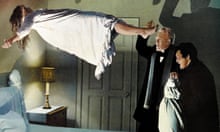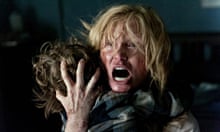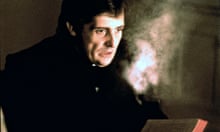Forty years after the Warner Brothers front-office moguls almost shelved what proved to be the most profitable film in the studio’s history up to that point, The Exorcist continues to excite, divide and disturb. It followed Polanski’s playful Rosemary’s Baby (1968) in centring on demonic possession. But William Peter Blatty’s novel, based closely on fact, dropped the humour found in his previous work. Moreover, this deeply Catholic movie, which credits a battery of Jesuit advisers, is at the opposite end of the spectrum from Jack Clayton’s circumspect The Innocents in its depiction of manifest evil. It dramatically raised the ante by featuring a devil that vomits, urinates, masturbates, explodes with obscenities and desecrates the image of the Virgin. For much of the way, though, the film is subtle, even obscure, and has an eclectic score of a kind we associate with Kubrick.
As with The French Connection, Friedkin drew on his experience in documentaries to create a realistic setting for its story of a 12-year-old girl (Linda Blair), daughter of a neurotic movie star (Ellen Burstyn), becoming possessed by an agent of Satan in Washington DC. The movie was given a peculiar resonance by being shot in the anxious Watergate period: America’s defeat in Vietnam, student riots, Richard Nixon wrestling with his own demons in the White House. The film’s haunting prologue set in northern Iraq has now taken on a new potency. The elderly Father Merrin (Max von Sydow), a Jesuit experienced in exorcism, confronts an ancient evil spirit at an archaeological dig outside Mosul, an area now controlled by Isis.
The film’s evil may be of the kind Hannah Arendt characterised as banal, but it stands in stark contrast to the romantic Manichaean conflict in the mythic contexts of Peter Jackson’s Tolkien films and the Harry Potter stories. On its cover is the now iconic poster influenced by the striking scene (inspired by René Magritte’s painting The Empire of Lights) in which Father Merrin’s nocturnal arrival at the family’s cursed house in Washington is illuminated by a blinding shaft of light from an upstairs window.
This three-disc Blu-ray box set contains the 1973 release and the director’s cut, which is 10 minutes longer, as well as commentaries by Blatty and Friedkin and two important documentaries, one the thoughtful 1998 BBC film presented by Mark Kermode, The Fear of God: 25 Years of The Exorcist.







Comments (…)
Sign in or create your Guardian account to join the discussion